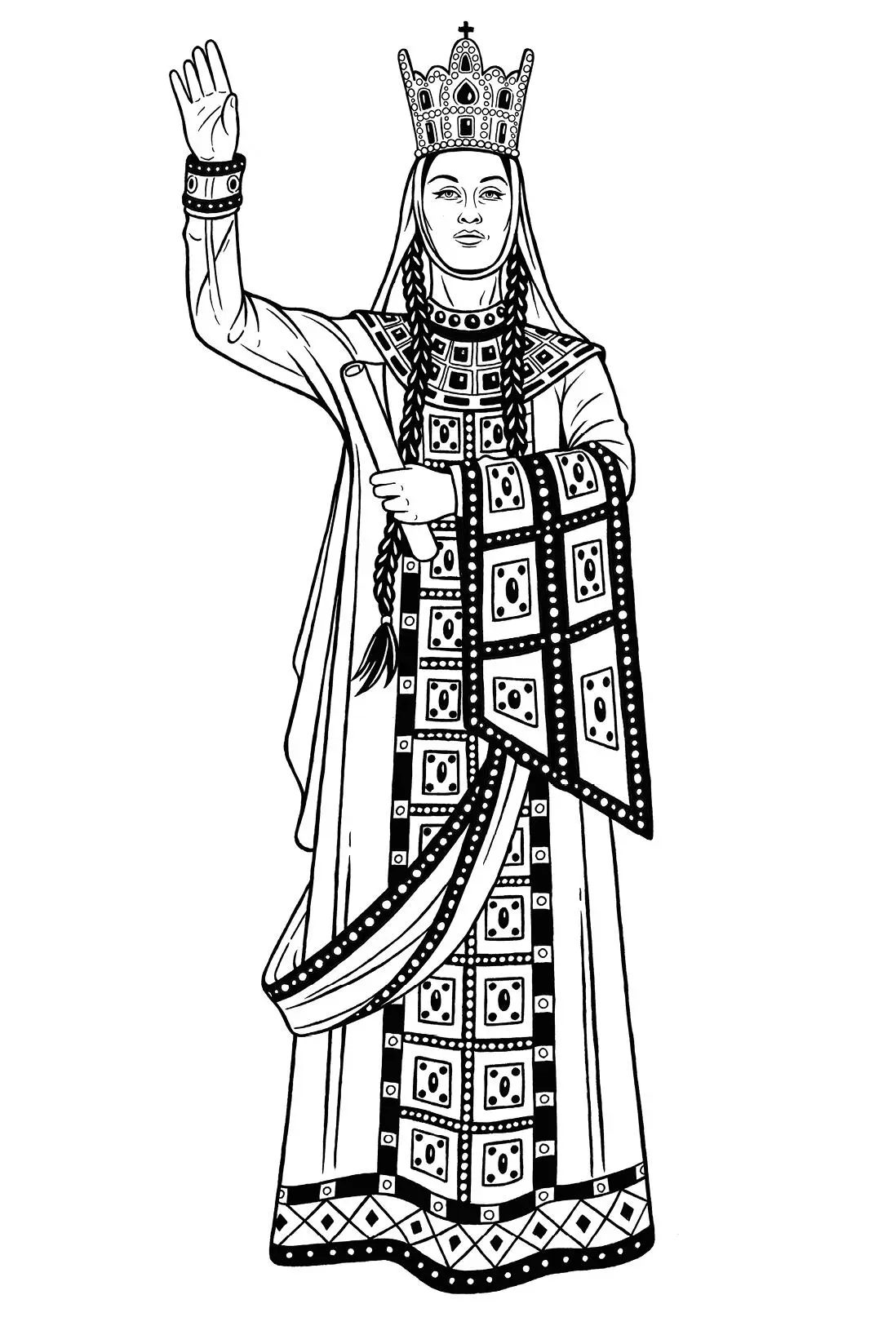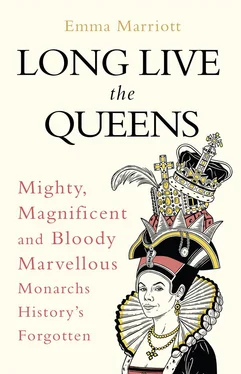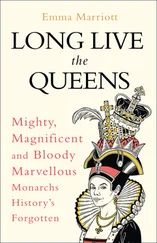Seondeok seems to have elicited fierce loyalty amongst her people and she was worshipped almost as the reincarnation of Buddha. Stories also still abound in Korea of her mystical powers, in particular the prophecies she issued during her reign, all of which were said to have come true. One legend relates how, on hearing a chorus of white frogs suddenly appearing and croaking by the Jade Gate Pond at the Yeongmyosa Temple, Seondeok surmised that 500 Baekje enemy soldiers were hiding in a particular valley west of the capital, Gyeongui. As a result, she immediately ordered two generals to lead 2,000 of her best soldiers to the valley, where the Baekje army and their reinforcements were destroyed. When asked how she knew this, she reported that the frogs represented soldiers, white meant they came from the west, and the jade gate was a euphemism for female genitalia, so she knew they would be hiding in the ‘Woman’s Root Valley’.
Another surviving structure that bears witness to the cultural and technical advances made during Seondeok’s reign is the Cheomseongdae astronomical observatory of Gyeongju. This structure may have been part of a larger complex as the Silla capital of Gyeongju was already thriving as a scientific hub, particularly in the field of astronomy and astrology. Historical accounts point to it being built during the reign of Seondeok, and its twenty-seven layers of stone correlate with the Queen being the twenty-seventh monarch of Silla. With a window that captured the sun’s rays, it’s thought the observatory acted like a sundial, telling the time, setting the agricultural calendar and forecasting the weather; it would have formed a central place in the economic life of people. (Some even say its bottle-like shape represents the feminine form and thus could have been a temple dedicated to Seondeok, but the most favoured view is that it was an observatory.)
Seondeok never married or had children – possibly to avoid political conflict – and the two subsequent queens of Silla similarly remained unwed. Seondeok did apparently predict the exact date of her death: 17 January 647, and she chose as her successor her cousin, Kim Seung-man, named Jindeok, proving that the people of Silla were receptive to female rulers and that Seondeok’s reign must not have been quite so disastrous as others predicted. Far from it, at a time of war and violence, Seondeok held her kingdom together, advanced Buddhism and culture in Silla and paved the way for future queens, both in her successor and the ninth-century Jinseong, who would rule as Korea’s third and final female ruler. Zip forward over a thousand years and Seondeok’s story has been told in an immensely popular South Korean TV drama of the same name, her life even now immortalised on the small screen.


Born: circa 1166
Died: circa 1213
There are multiple legends and theories about where Queen Tamar of Georgia is buried. The scholarly view is that she lies within the vaults of the Bagrationi dynasty at the Gelati monastery in west Georgia, whilst others believe she is buried in the caves of Vardzia in the south or that her holy relics were taken to a vault in Jerusalem. In another legend, she is not dead, but lying in a gold-wreathed coffin somewhere in the mountains of Georgia and that a time may come when she finally wakens from her centuries-old slumber, and that day will be one of revival and great happiness for the people of Georgia.
Such legends are testament to how revered Queen Tamar was, and still is. She remains to this day an important symbol in Georgian culture, the inspiration for poems, songs and stories, who was also canonised as a saint in the Eastern Orthodox Church. Reigning from 1184 to 1213, her rule is associated with a ‘Golden Age’ in Georgia, a period which saw political, military and cultural successes credited to a woman who was proclaimed a king (‘ mepe ’) as there was no word in the Georgian language for ‘queen’.
Tamar was crowned co-ruler with her father King George III of Georgia in 1178 at the age of eighteen. George himself could be ruthless – blinding and castrating his own nephew who had legitimate claim to the throne – but his eldest daughter he described as ‘the bright light of his eyes’. When he died in 1184, Tamar became sole ruler and was crowned a second time to legitimate her rule. She was soon encouraged to find a husband and her aunt encouraged a union with Yury Bogolyubsky, son of the Grand Prince Andrew of Suzdal from the neighbouring Russian kingdom of Kiev. The marriage was strained from the outset as Yury was an able soldier but a heavy drinker and for two years Tamar was forced to put up with his promiscuity with concubines and slaves. As Tamar had not conceived a child, she took the decision to persuade the noble council to annul the marriage, and Yury was duly expelled from the kingdom and sent to Constantinople. He subsequently made two coup attempts with other disaffected nobles but each failed and instead of punishing him harshly (aka executing him, as her father would have done), Tamar showed clemency and exiled him each time.
Tamar chose her second husband for herself and this marriage proved more of a success. He was David Soslan, an Alan prince and military commander, who had been instrumental in defeating the nobles who had rallied around Yury. Tamar and David had two children, a son – George-Lasha – in 1192, and daughter – Rusada – in around 1194, both of whom would be future sovereigns of Georgia. Whilst David appeared on coins and charters, he remained a subordinate ruler to Queen Tamar, although he was praised for his devotion to her and was instrumental in securing military victories against a host of Georgia’s enemies.
Throughout her reign, Queen Tamar faced rebellions from various factions of the nobility, not least her feckless first husband Yury. To counter this, she set upon a series of military campaigns that not only extended Georgia’s boundaries farther than ever before, but also served to keep potential troublemakers occupied and focused on war. Tamar was also able to build upon the achievements of her predecessors, notably her father George III and great-grandfather David IV, ‘the builder’, who had succeeded in driving the Seljuk Turks out of the kingdom. The Queen presented herself as both a figurehead for her troops and as a general and was skilled at strategy and drawing up plans for battle, which her husband David helped to execute. In 1205, Tamar’s troops routed the Turkish army under the Seljuk Sultan of Rum and her armies ventured to previously unknown territories of Azerbaijan, Turkey and even as far as northern Iran. By the last years of Tamar’s reign, the Georgian empire and sphere of influence had reached its greatest extent, and stretched from the Black Sea to the Caspian Sea and from the Great Caucasus in the north to Erzurum in what is now Turkey.
As new territories and commercial centres came under Georgian control, wealth poured into the country and court, out of which emerged a flowering of Georgian culture. The monarchy sought to associate itself with Christianity and the Byzantine West and set about building a series of cathedrals. Georgia’s capital Tbilisi became a regional power with a thriving economy, a population of 100,000 and impressive cultural output. Trade flourished with the Middle East and coins issued in around 1200 feature both Georgian and Arabic inscriptions.
Читать дальше














